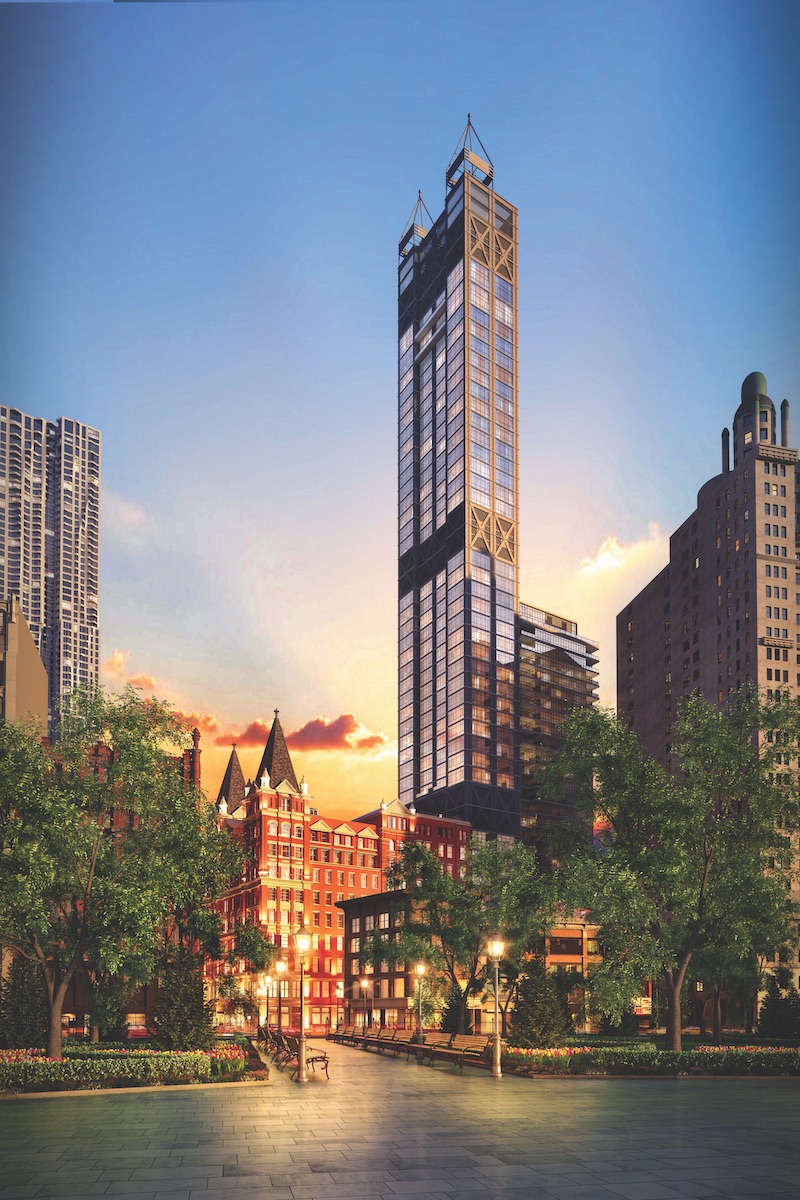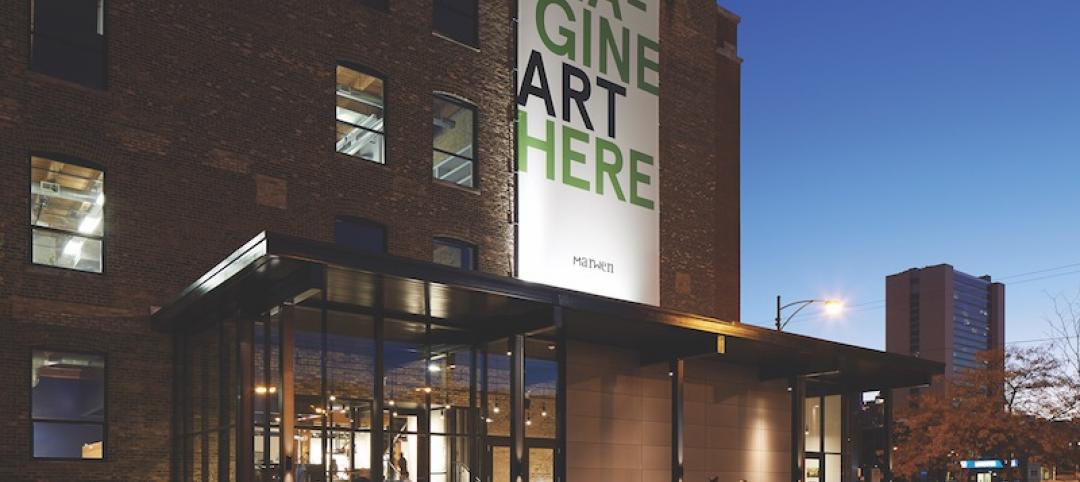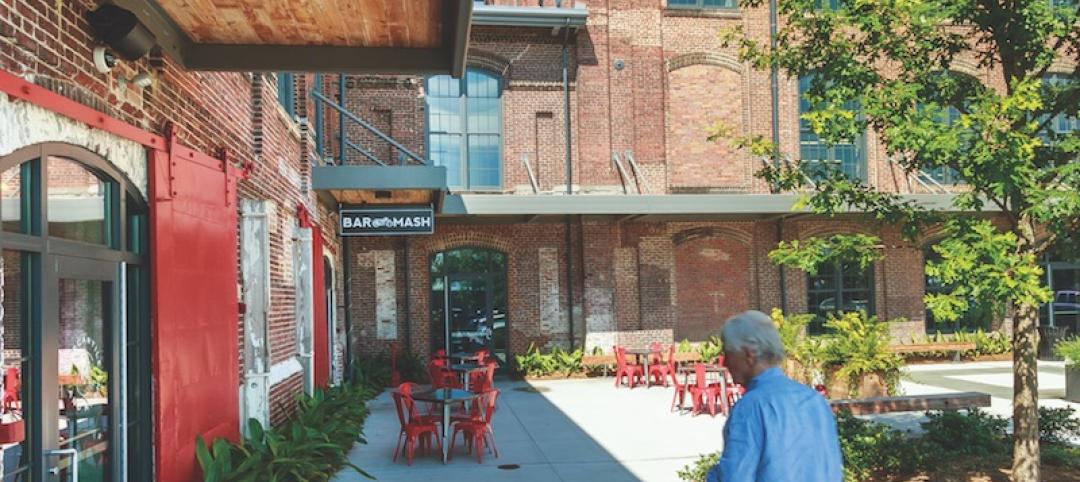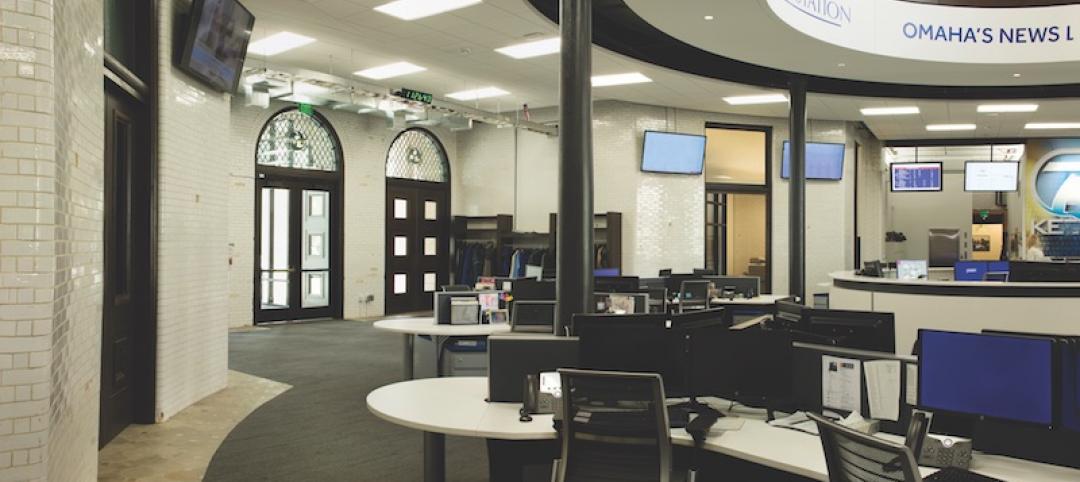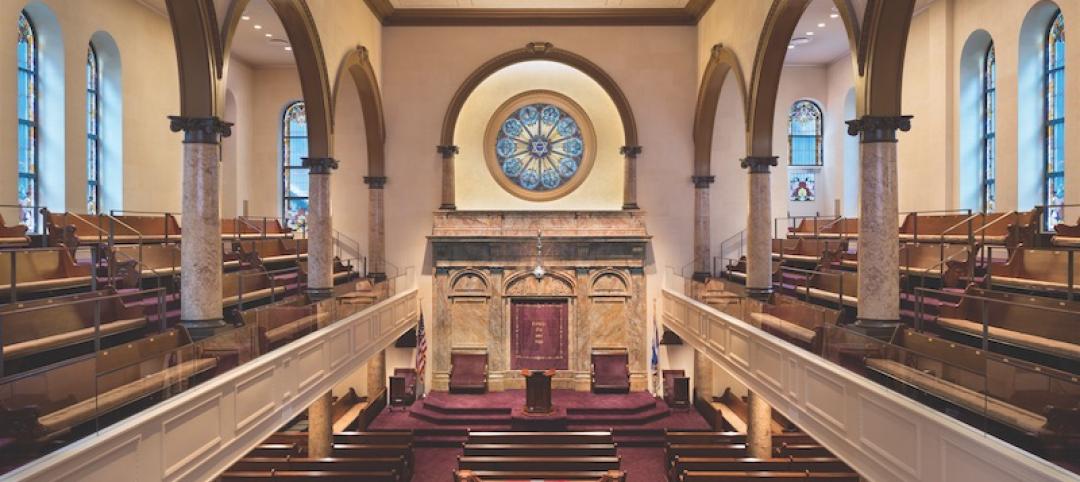When it opened in 1883, the nine-story Temple Court Building was one of the tallest buildings in New York City, and one of the first with a soaring, open atrium at its center. The red-brick and terra cotta office building was commissioned by dry-goods retailer and banker Eugene Kelly to house law practices. Its signature turrets were trendsetting at the time—the Woolworth Building adopted similar architectural elements some 30 years later.
Temple Court and its Annex (1890) were designated a New York City landmark in 1998, to no avail: the last tenant moved out at the end of 2001.
In 2012, a development group led by Allen Gross, President of GFI Capital Resources, purchased the property and set a plan to revive it for hotel/retail use, along with the construction of a ground-up, 51-story residential tower on the adjacent lot. The bottom 10 floors of the new tower adjoin the historic property; both house hotels rooms. The upper 41 floors of the tower contain 67 luxury condos and amenities spaces. Beekman Hotel and Residences was fully completed earlier this year.
Key to the landmark building’s revival was overcoming a tenuous fire code issue that forced its previous owners, in the 1940s, to fully enclose the dramatic open atrium with walls, hiding the atrium, railings, and skylight from view. The team worked with the NYC fire department and the Landmarks Preservation Commission to implement a novel $2 million smoke curtain system—the first of its kind in North America—that permitted the obtrusive atrium walls to come down. Curtains were installed on every floor to ensure that smoke would be contained in case of a fire. Fans on the roof and a smoke purge system draw fresh air in via the ground-floor windows and doors.
The team faced other technical problems: inadequate MEP infrastructure (solution: place all mechanical systems in the new tower); varying floor heights (solution: design the tower’s lower floors to align seamlessly); and spotty vertical access throughout construction (solution: careful planning of materials delivery and project sequencing).
The Beekman Hotel opened in September 2016. It was an instant hit. As one guest put it, “What you will find throughout the property are surprises and delight. The attention to detail is what strikes you first, and then the pure class and elegance.”
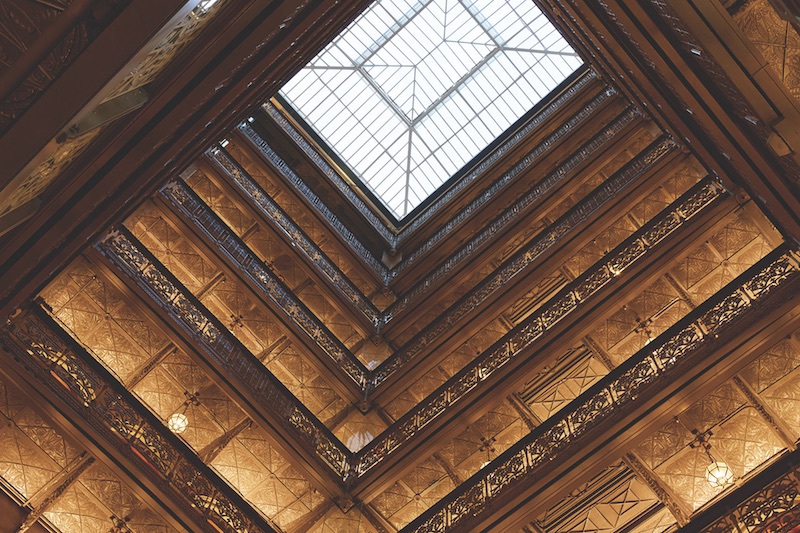
Bronze Award Winner
BUILDING TEAM Broadway Construction Group (submitter, GC) 5 Beekman Property Owner, LLC (owner) Gerner Kronick & Valcarcel (architect) Martin Brudnizki Design Studio (interior architect) WSP (SE) PHA Engineering (CE) Lilker Associates (MEP) Mueser Rutledge Consulting Engineers (geotechnical engineer) DETAILS 350,000 sf Total cost $400 million Construction time 2013 to 2018 Delivery method Cost plus
CLICK HERE TO GO TO THE 2018 RECONSTRUCTION AWARDS LANDING PAGE
Related Stories
Reconstruction Awards | Nov 16, 2016
Reconstruction Awards: Marilyn I. Walker School of Fine and Performing Arts, Brock University
The five-story brick-and-beam structure is an adaptive reuse of the Canada Hair Cloth Building, where coat linings and parachute silks were once made.
Reconstruction Awards | Nov 16, 2016
Reconstruction Awards: Marwen
Marwen currently offers 100 studio courses to 850 underserved students from 295 schools and 53 zip codes.
Reconstruction Awards | Nov 16, 2016
Reconstruction Awards: The Cigar Factory
The Cigar Factory was originally a cotton mill but became the home of the American Cigar Company in 1912.
Reconstruction Awards | Nov 16, 2016
Reconstruction Awards: St. Patrick's Cathedral
The cathedral, dedicated in 1879, sorely needed work.
Reconstruction Awards | Nov 15, 2016
Reconstruction Awards: Lovejoy Wharf
After demolishing the rotten wood wharf, Suffolk Construction (GC) built a new 30,000-sf landscaped quay, now known as Lovejoy Wharf.
Reconstruction Awards | Nov 15, 2016
Reconstruction Awards: KETV-7 Burlington Station
The 1898 Greek Revival train terminal, which was listed on the National Register of Historic Places in 1974, had been abandoned for nearly four decades.
Reconstruction Awards | Nov 14, 2016
Reconstruction Awards: The Gallery at the Three Arts Club
On the exterior of the building, masonry and terra cotta were revitalized, and ugly fire escapes on the south façade were removed.
Reconstruction Awards | Nov 14, 2016
Big-box store rescaled to serve as a preventive-care clinic
The hospital was attracted to the big box’s footprint: one level with wide spans between structural columns, which would facilitate a floor plan with open, flexible workspaces and modules that could incorporate labs, X-ray, ultrasound, pharmacy, and rehab therapy functions.
Reconstruction Awards | Nov 14, 2016
Fire-charred synagogue rises to renewed glory
The blaze left the 110-year-old synagogue a charred shell, its structural integrity severely compromised.
Reconstruction Awards | Nov 11, 2016
Adaptive reuse juices up an abandoned power plant
The power plant was on the National Register of Historic Places and is a Recorded Texas Historic Landmark.


